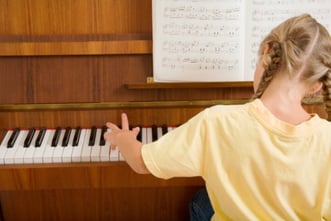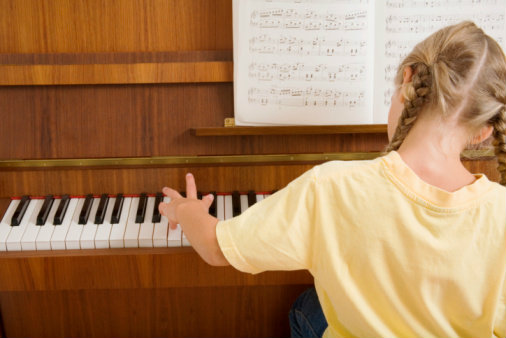 An article from KidsHealth.org shares that children who regularly play or sing music:
An article from KidsHealth.org shares that children who regularly play or sing music:
- Do better in reading and math, once in school
- Can focus and control their bodies more effectively
- Play better with others
- Have higher self-esteem
Psychology Today shares a story of a child who experienced anxiety, but calmed down when he listened to classical music. And BabyCenter.com points out how music helps parents to bond with their young children.
Plus, CreativityInstitute.com shares how music helps children to:
- Express their emotions
- Release energy or creatively channel it
- Learn new words and ideas
- Discover more about themselves and their relationships with others
So the benefits are significant—but how do you expose your preschooler to music in an enjoyable, age-appropriate way?
Introduce Preschoolers to Appropriate Songs
Music appreciation begins by simply listening to and enjoying its melodies, words and rhythms. Children who do this are “exposed to a wide variety of tastes, smells, textures, colors and sounds. And researchers believe this forges more pathways between the cells in their brains,” according to the KidsHealth story. Benefits increase further when children actively participate in the music.
In this stage of development, children enjoy songs that “repeat words and melodies, rhythms with a definite beat and words that ask them to do things.” Teach them those types of songs while also exposing them to a variety of genres, from folk to opera. Play act to the music, perhaps pretending to be animals or objects.
Provide them with safe and durable musical toys, and also play musical games. For example, ask your child to close his or her eyes and then describe the sounds heard. Where are they coming from? Try this both indoors and outdoors. Then, while your child’s eyes are still closed, purposely create a sound and then have your child guess what’s making that sound.
Pointing Out the Beat
Encourage your child, in a fun way, to listen to beats. Are they steady? Does a kitchen clock tick regularly (assuming you still have a clock that ticks). What about a dog barking? How steady is that sound?
Create rhythms with hands, feet and voices. Add in rhythm sticks, bells or other simple instruments. You can even create your own instruments by filling plastic containers with seeds, beads, rice or beans. Use rubber bands stretched around coffee cans or shoeboxes to make stringed instruments.
Can your child mimic the sound of a galloping horse? A snail crawling? Create a “concert” of sounds that includes loud and soft ones, fast and slow ones.
Creative Dancing
Move your body to the various rhythms and tempos of songs—and then ask your child to copy your movements. Then, reverse! Let your child take the lead and you copy him or her. Get a scarf for each of you and raise and lower the scarves as pitches ascend and descend. Or walk on tiptoe during quiet music and stomp feet during louder music. Practicing this type of physical control can help your preschooler to build concentration and self-control.
Choose the Right Preschool Program
Select a preschool program that incorporates music in fun and educational ways. That way, the benefits of music participation are reinforced throughout the week.
Looking to enrich your child’s learning and life through music and other effective methods? Horizon Education Center provides affordable quality care including educational and enrichment opportunities for children in the following Northeast Ohio locations.







